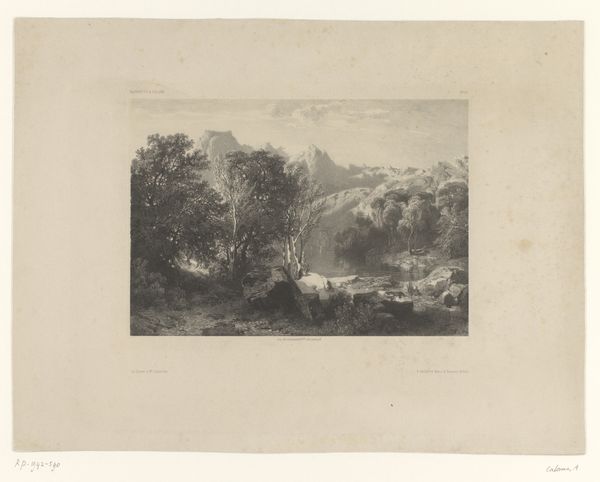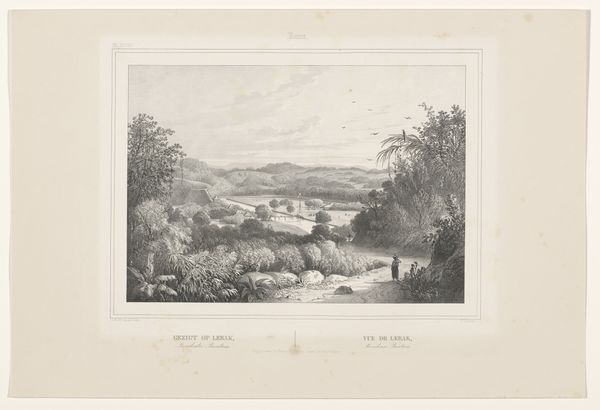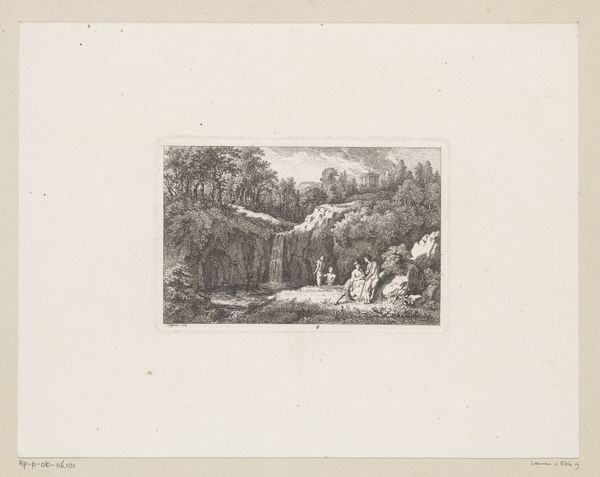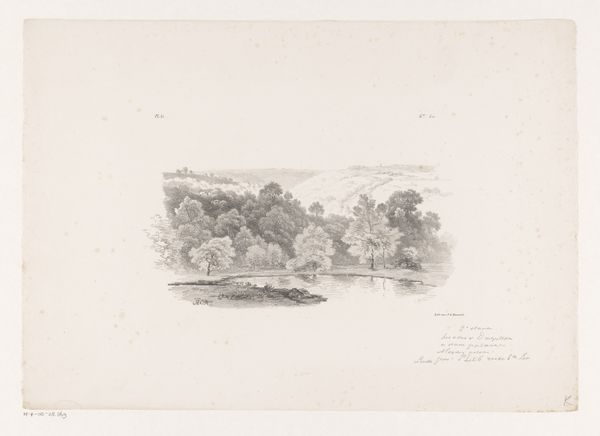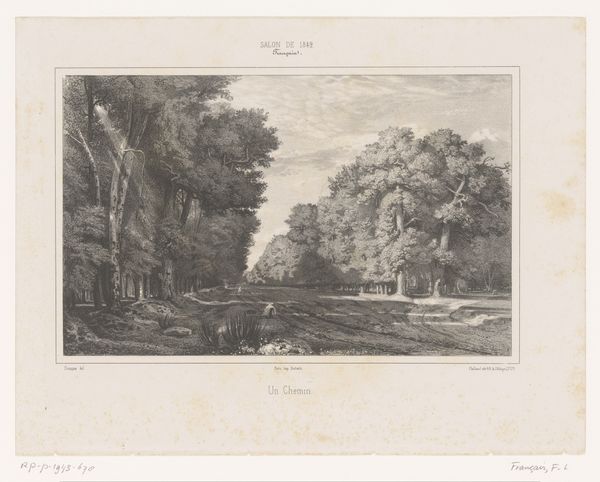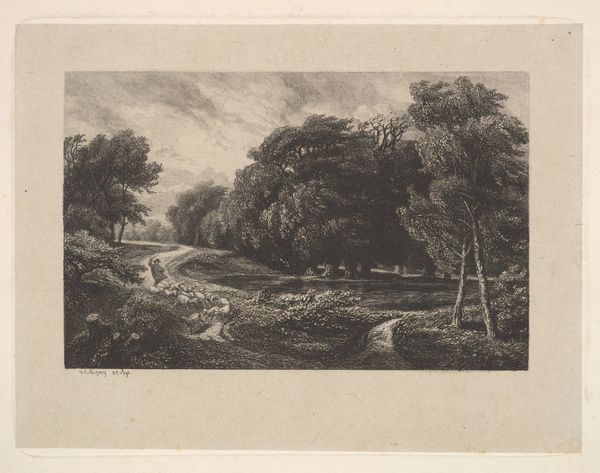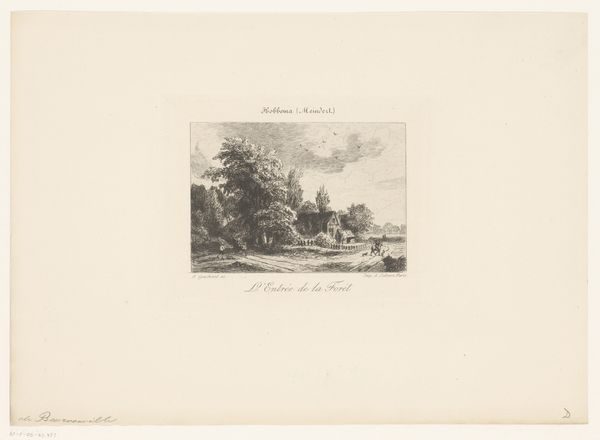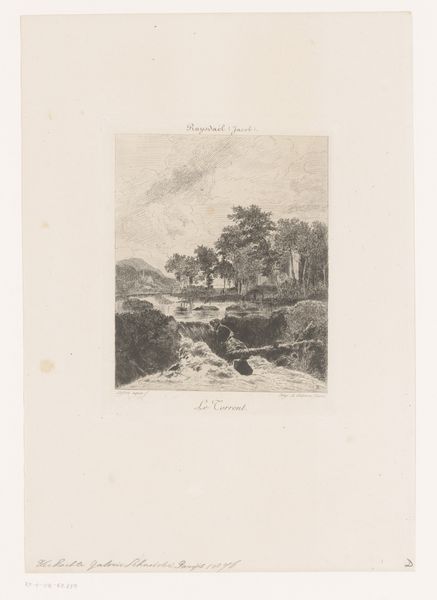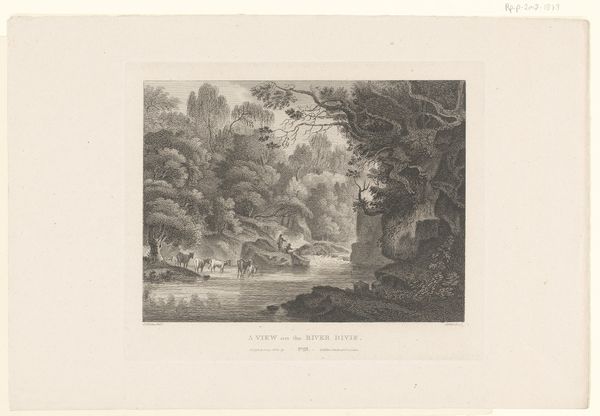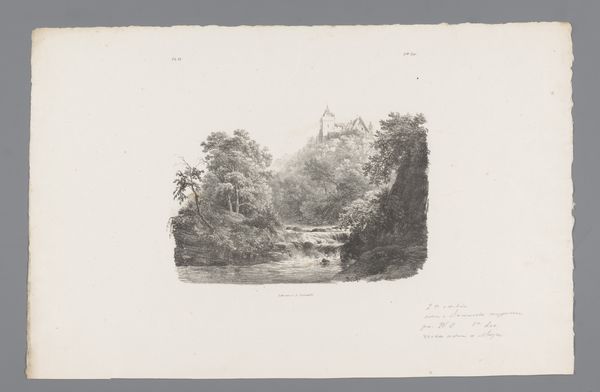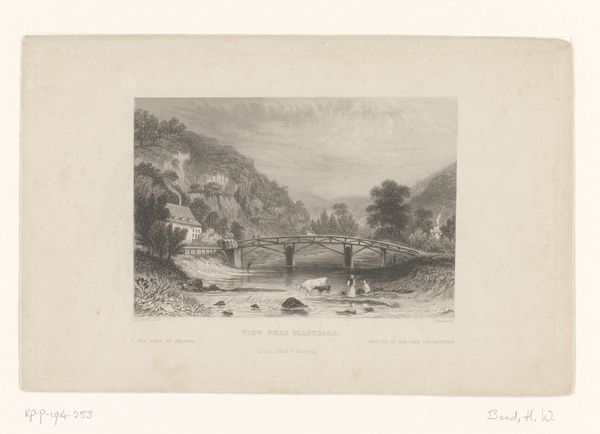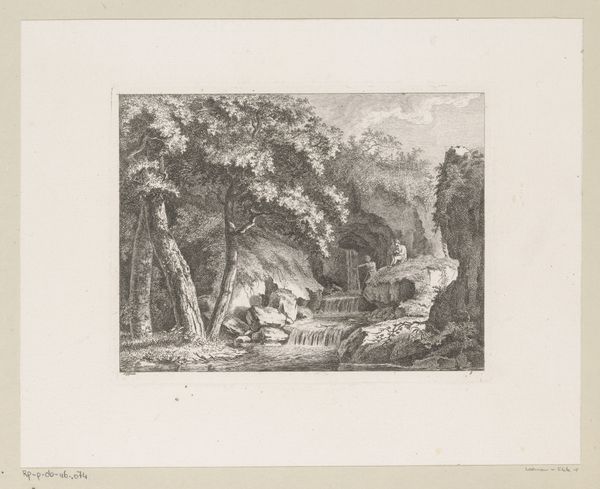
Zicht op de vallei van Brühl en het kasteel van Mödling bij Wenen c. 1840 - 1856
0:00
0:00
drawing, pencil
#
pencil drawn
#
drawing
#
landscape
#
form
#
pencil drawing
#
romanticism
#
pencil
#
line
#
realism
Dimensions: height 322 mm, width 568 mm
Copyright: Rijks Museum: Open Domain
This landscape scene was created by Hubert Clerget in the 19th century, using a printmaking technique called etching. Etching is all about controlled decay. The artist covers a metal plate with a waxy, acid-resistant coating, then scratches an image into this coating with a sharp needle. The plate is then submerged in acid, which bites into the exposed metal, creating lines. The longer the plate sits in the acid, the deeper and darker the lines will be. In this print, you can appreciate the fine detail Clerget achieved, and how the marks create the tones and textures in the scene. The print is the result of a process, combining artistic skill with chemical action. It's a reminder that even seemingly traditional art forms are deeply intertwined with technical ingenuity and the industrial processes that made them possible. The etched line, so prevalent in the 19th century, is inseparable from the rise of mass media.
Comments
No comments
Be the first to comment and join the conversation on the ultimate creative platform.
